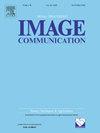Multiple-image encryption algorithm based on S-boxes and DNA sequences
IF 2.7
3区 工程技术
Q2 ENGINEERING, ELECTRICAL & ELECTRONIC
引用次数: 0
Abstract
Image encryption is crucial for safeguarding sensitive visual data; however, traditional methods often encounter challenges regarding efficiency and adaptability to the unique characteristics of images. This research is motivated by the potential of ring-based algebraic structures to develop lightweight, secure, and efficient encryption schemes specifically designed for image data. The article presents a novel approach to image encryption in cryptography using a local ring algebraic structure. The proposed method involves encrypting multiple images by constructing substitution boxes from subsets, which are not subgroups but have identity and invertibility axioms. The challenge of using subsets for encryption purposes is addressed by taking unit elements of the ring, picking a subgroup, and splitting it into two subsets. The substitution box is generated by one of the subsets and used for the substitution process, while the other subset is mapped to the Galois field. It constructs the substitution box and is used for diffusion. A DNA sequence is applied to the red, green, and blue channels of the image, and a key is generated by hashing the image and using a subset of the subgroup of units of the ring. Finally, all channels are XORed with the key. The performance of the proposed scheme is evaluated using different analyses, and it is found that the scheme outperforms existing approaches. This approach presents a promising solution for image encryption in cryptography.
基于s盒和DNA序列的多图像加密算法
图像加密对于保护敏感的视觉数据至关重要;然而,传统的方法在效率和对图像独特性的适应性方面经常遇到挑战。这项研究的动机是基于环的代数结构的潜力,以开发专门为图像数据设计的轻量级,安全和有效的加密方案。本文提出了一种利用局部环代数结构实现密码学中图像加密的新方法。该方法通过从子集构造替换盒来加密多个图像,这些子集不是子群,但具有恒等和可逆性公理。通过取环的单位元素,选择一个子群,并将其分成两个子集,解决了为加密目的使用子集的挑战。替换框由其中一个子集生成并用于替换过程,而另一个子集则映射到Galois字段。它构造了代换箱,用于扩散。将DNA序列应用于图像的红色、绿色和蓝色通道,并通过散列图像和使用环单元子组的子集来生成密钥。最后,所有通道都使用密钥进行xor。采用不同的分析方法对该方案的性能进行了评估,发现该方案优于现有的方法。这种方法为密码学中的图像加密提供了一种很有前途的解决方案。
本文章由计算机程序翻译,如有差异,请以英文原文为准。
求助全文
约1分钟内获得全文
求助全文
来源期刊

Signal Processing-Image Communication
工程技术-工程:电子与电气
CiteScore
8.40
自引率
2.90%
发文量
138
审稿时长
5.2 months
期刊介绍:
Signal Processing: Image Communication is an international journal for the development of the theory and practice of image communication. Its primary objectives are the following:
To present a forum for the advancement of theory and practice of image communication.
To stimulate cross-fertilization between areas similar in nature which have traditionally been separated, for example, various aspects of visual communications and information systems.
To contribute to a rapid information exchange between the industrial and academic environments.
The editorial policy and the technical content of the journal are the responsibility of the Editor-in-Chief, the Area Editors and the Advisory Editors. The Journal is self-supporting from subscription income and contains a minimum amount of advertisements. Advertisements are subject to the prior approval of the Editor-in-Chief. The journal welcomes contributions from every country in the world.
Signal Processing: Image Communication publishes articles relating to aspects of the design, implementation and use of image communication systems. The journal features original research work, tutorial and review articles, and accounts of practical developments.
Subjects of interest include image/video coding, 3D video representations and compression, 3D graphics and animation compression, HDTV and 3DTV systems, video adaptation, video over IP, peer-to-peer video networking, interactive visual communication, multi-user video conferencing, wireless video broadcasting and communication, visual surveillance, 2D and 3D image/video quality measures, pre/post processing, video restoration and super-resolution, multi-camera video analysis, motion analysis, content-based image/video indexing and retrieval, face and gesture processing, video synthesis, 2D and 3D image/video acquisition and display technologies, architectures for image/video processing and communication.
 求助内容:
求助内容: 应助结果提醒方式:
应助结果提醒方式:


